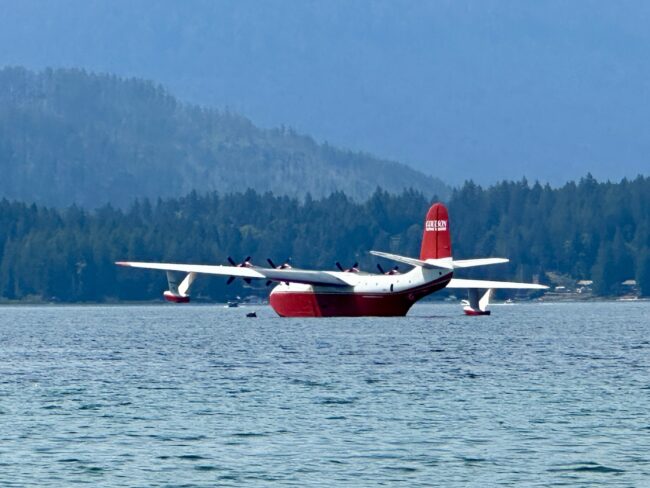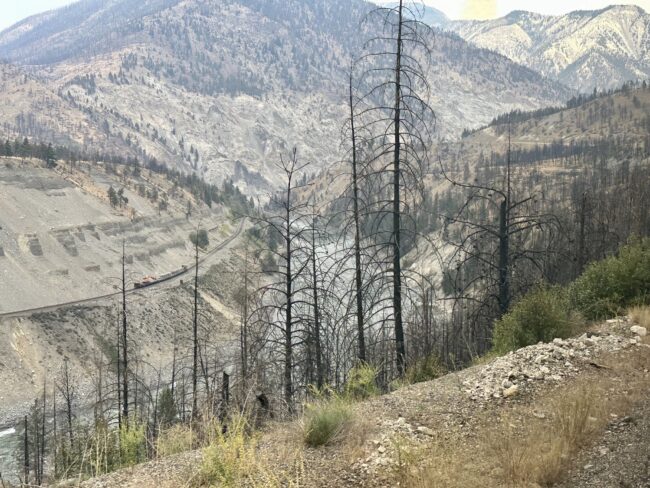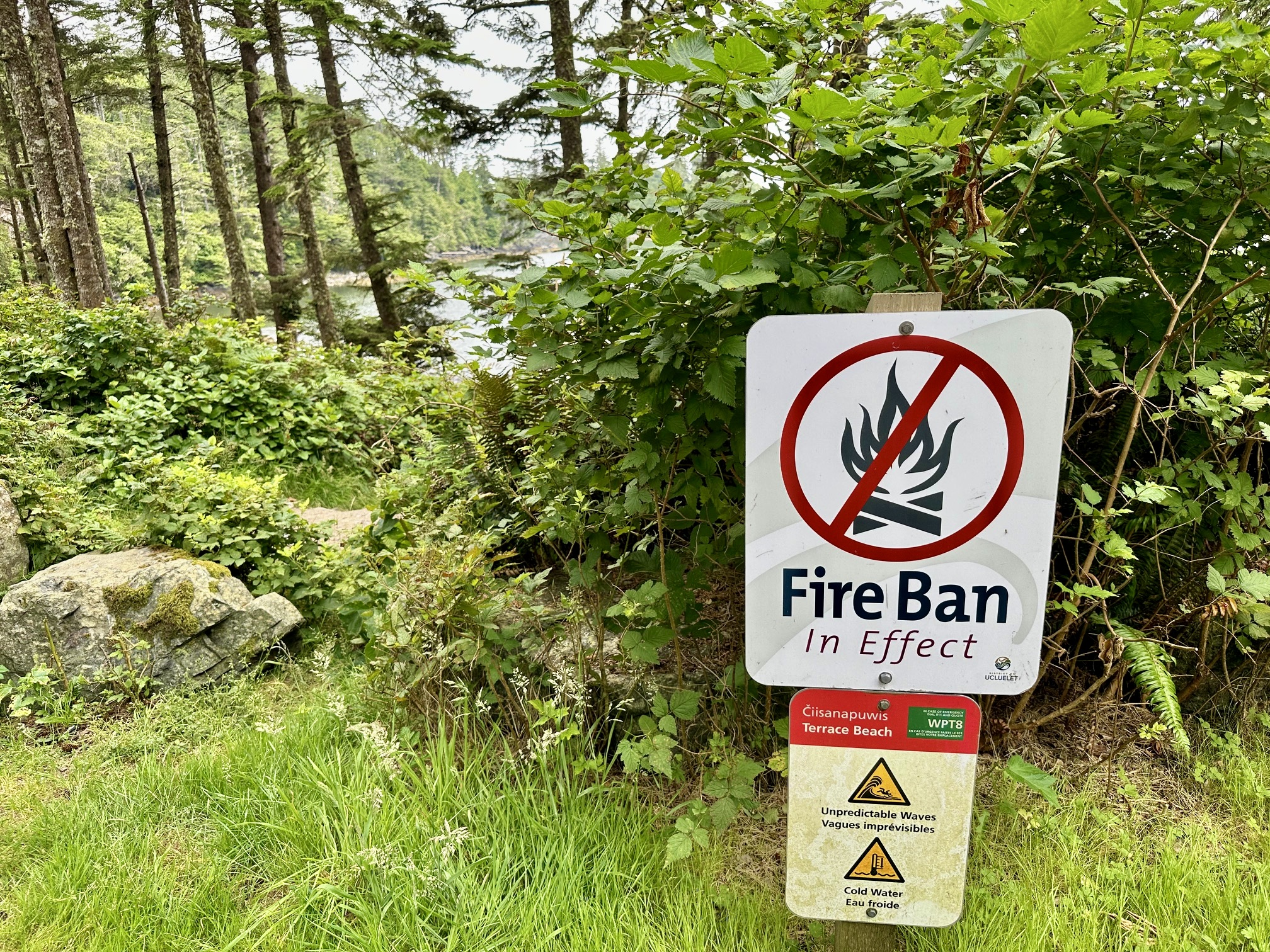Canadian forest fires intensify, with enormous footprint

In 2023 the forest fires in Western Canada were so extensive that they burnt 37 million acres of forest lands, which is ten times the total area of forestry in the UK. The carbon emissions were so great that they alone had a carbon footprint bigger than every country apart from the US, China and India. Canada does not include emissions from wildfires in its carbon budget so the impact of its forest fires is in addition to its industrial and domestic carbon footprint. Although the total area burnt the next year - in 2024 - was smaller, the 2024 fires were particularly intense and destroyed 50% of the buildings in the city of Jasper. Forest fires affected infrastructure so badly that tourists were excluded from the whole of Jasper National Park in Alberta for many weeks. This new intensity can also destroy trees that have been growing for hundreds of years and may have survived many other other fires. This would have been the case for the King Arthur tree in California which had been the 9th largest Giant Redwood in the world: this huge and ancient Sequoia was destroyed in the 2020 Castle Fire.

It is uncertain what is causing these intense infernos beyond climate change, to which the fires are themselves contributing. Many people believe that allowing too much dry and dead wood to build up creates the conditions for particularly hot fires which will easily jump fire breaks and natural circuit breakers, such as rivers It may be that the First Nations [as Canadians call the native peoples who inhabited the country for thousands of years before European settlers arrived] were better at managing the land and would have reduced the fuel load in the forests, and there would have been a greater variety of tree species. Another paradox is that when the National Park authorities are most effective at putting out fires this allows a greater fuel load to build up so that there can be fewer fires but much bigger ones. To counter this, some Canadian Park managers are deliberately starting fires which they believe will be controllable - this is evident in the forests next to Lake Minnewanka. These are done in the off-season when large conflagrations are unlikely.
In the past, forestry companies tried to extinguish fires by using float planes, such as the Hawaii Martin Mars dropping water. This was put in an air museum in August 2024. The seaplane's water deposits were less well-targeted than today's helicopter drops.  Nowadays, forest blazes are usually left to run their natural course and this can take a long time. Sometimes a fire will continue smouldering underground and it can be 18 months before a forest fire is confirmed to be finished. In cases where buildings, main roads or railway lines are threatened there will often be efforts to extinguish the fire using helicopters. Drones are also used to survey the progress of fires.
Nowadays, forest blazes are usually left to run their natural course and this can take a long time. Sometimes a fire will continue smouldering underground and it can be 18 months before a forest fire is confirmed to be finished. In cases where buildings, main roads or railway lines are threatened there will often be efforts to extinguish the fire using helicopters. Drones are also used to survey the progress of fires.
 Nowadays, forest blazes are usually left to run their natural course and this can take a long time. Sometimes a fire will continue smouldering underground and it can be 18 months before a forest fire is confirmed to be finished. In cases where buildings, main roads or railway lines are threatened there will often be efforts to extinguish the fire using helicopters. Drones are also used to survey the progress of fires.
Nowadays, forest blazes are usually left to run their natural course and this can take a long time. Sometimes a fire will continue smouldering underground and it can be 18 months before a forest fire is confirmed to be finished. In cases where buildings, main roads or railway lines are threatened there will often be efforts to extinguish the fire using helicopters. Drones are also used to survey the progress of fires.
One measure which might reduce the issue is to replant burnt-out areas with species that occur naturally and are less flammable and better as surviving such as Eucalyptus. However, the hotter, drier summers are creating conditions where we are in a new age of more intense forest fires and the Canadians are adjusting as fast as they can. This means short term measures such as evacuation plans and more firefighting equipment, as well as longer term plans such as working on a better mix of trees and combating climate change more widely.

Comments are closed for this post.
